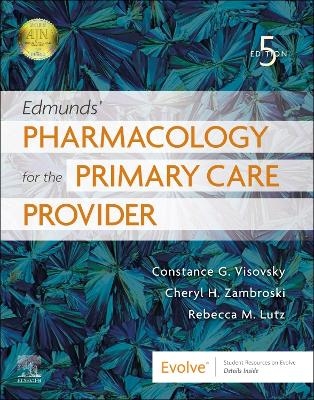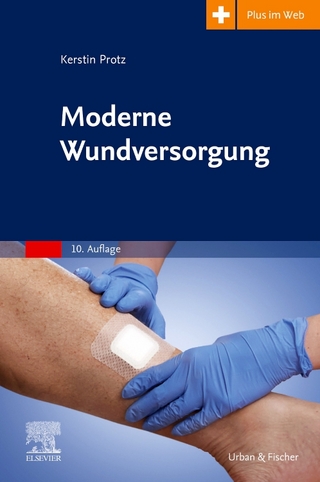
Edmunds' Pharmacology for the Primary Care Provider
Elsevier - Health Sciences Division (Verlag)
978-0-323-66117-1 (ISBN)
Comprehensive pharmacotherapeutics content is written specifically for Nurse Practitioners, other Advanced Practice Nurses, and Physician Assistants.
Focus on key drugs highlights the most commonly prescribed and most representative drugs of each major drug class - with particular emphasis on the top 100 prescribed drugs.
Emphasis on patient teaching helps you communicate with patients and family caregivers to promote adherence to the drug regimen.
Emphasis on health promotion describes how to help patients stay well and improve their health, including coverage of vitamins, weight management, immunizations and biologicals, and smoking cessation.
Complementary and Alternative Therapies tables highlight significant dietary and herbal interactions with FDA-approved drugs.
NEW! Thoroughly updated content reflects the latest drug information and current thinking on pharmacologic management.
NEW macro- and chapter-level organization is based on body systems rather than drug classes, for better coverage of the medications prescribed for the health problems affecting specific body systems.
NEW and UNIQUE! Chapter format begins with an overview of anatomy, physiology, and disease processes - as opposed to drug classes or drug types - and then follows the World Health Organization's Process for Rational Prescribing, using a six-step approach to drug selection and discussing first-, second-, and third-line treatments for each specific problem.
NEW! Practical learning aids include:
Black Box Warning boxes that draw attention to critical drug safety precautions.
Clinical Guidelines: Bookmark This features that identify websites where updated clinical guidelines can be found.
Medication Dosages tables that include dose ranges, maintenance doses, and, where appropriate, plans for dose escalation and de-escalation (e.g., corticosteroids).
Practice Pearls boxes that highlight good prescribing practices, safety measures, follow-up recommendations, serum blood level monitoring, referrals to specialty providers, and other key prescriber tips.
NEW! Prescribing Considerations unit addresses issues of medication adherence, prescription writing, cost, and quality assurance.
NEW! Updated coverage of pain management reflects the current realities of substance use and the opioid crisis.
Unit 1: Principles of Pharmacology for Advanced Practice 1 Pharmacokinetics and Pharmacodynamics 2 Pharmacogenomics Unit 2: Topical Medications 3 Integumentary System Medications 4 Eye and Ear Medications Unit 3: Pulmonary System Medications 5 Allergy and Respiratory Medications 6 Asthma Medications 7 Chronic Obstructive Pulmonary Disease Medications Unit 4: Cardiovascular System Medications 8 Antihyperlipidemic Medications 9 Antihypertensive Medications 10 Coronary Artery Disease Medications 11 Heart Failure Medications 12 Antiarrhythmic Medications Unit 5: Hematologic System Medications 13 Anemia Medications 14 Anticlotting Medications Unit 6: Gastrointestinal System Medications 15 Gastroesophageal Reflux Disease, Gastritis, and Peptic Ulcer Disease Medications 16 Constipation and Diarrhea Medications 17 Antiemetic Medications Unit 7: Genitourinary System Medications 18 Male Genitourinary Medications 19 Urinary Incontinence Medications and Urinary Analgesics Unit 8: Reproductive System Medications 20 Contraceptive Medications 21 Medications for the Menopausal Transition Unit 9: Musculoskeletal System Medications 22 Antiinflammatory Medications 23 Disease-Modifying and Immune Therapy Medications 24 Antigout Medications 25 Osteoporosis Medications 26 Muscle Relaxant Medications Unit 10: Central Nervous System Medications 27 Migraine Headache Medications 28 Attention-Deficit/Hyperactivity Disorder Medications 29 Antiepileptic Medications 30 Parkinson's Disease Medications 31 Dementia and Alzheimer's Disease Medications 32 Pain Management Medications and Substance Abuse Unit 11: Mental Health and Behavior-Modifying Medications 33 Antianxiety and Insomnia Medications 34 Mood Disorder Medications 35 Antipsychotic Medications Unit 12: Endocrine System Medications 36 Thyroid Medications 37 Adrenal Gland Medications 38 Diabetes Mellitus Medications Unit 13: Antiinfective Medications 39 Principles for Prescribing Antiinfective Medications in Primary Care 40 Penicillins 41 Cephalosporins 42 Tetracyclines 43 Macrolides 44 Fluoroquinolones 45 Sulfonamides 46 Antitubercular Medications 47 Antifungal Medications 48 Antiviral and Antiretroviral Medications 49 Antiprotozoal Medications Unit 14: Health Promotion 50 Immunizations and Immunomodulation Medications and Schedules 51 Weight Management Medications 52 Smoking Cessation Medications Unit 15: Prescribing Considerations 53 Medication Adherence 54 Cost, Quality Assurance, and Prescription Writing in Prescribing Medications Index
| Erscheinungsdatum | 10.08.2022 |
|---|---|
| Zusatzinfo | Approx. 150 illustrations (150 in full color); Illustrations |
| Verlagsort | Philadelphia |
| Sprache | englisch |
| Maße | 216 x 276 mm |
| Gewicht | 1840 g |
| Themenwelt | Medizin / Pharmazie ► Pflege ► Ausbildung / Prüfung |
| ISBN-10 | 0-323-66117-3 / 0323661173 |
| ISBN-13 | 978-0-323-66117-1 / 9780323661171 |
| Zustand | Neuware |
| Haben Sie eine Frage zum Produkt? |
aus dem Bereich


